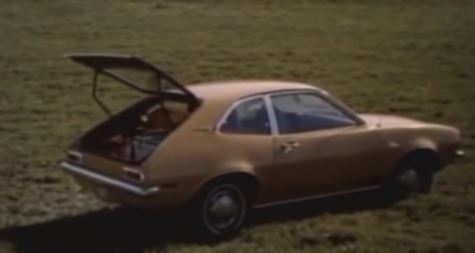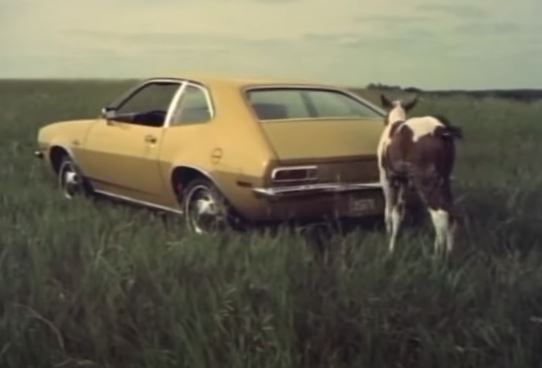The Ford Pinto is a small car that Ford Motor Company produced and sold in North America throughout the 1970s. Throughout its existence, the Pinto was available in three body styles: a two-door convertible sedan with a trunk, a three-door hatchback, and a two-door station wagon. However, since its release, it has sparked numerous debates.
Its fuel-tank design drew the attention of both the media and the government. The creation of the Pinto product took 25 months from conception to delivery. The mechanical design of the Pinto was standard, with an inline-four engine and bucket seats. As a result, it became one of Ford’s most well-known vehicles to date. Continue scrolling through the content to guess several intriguing facts about the Ford Pinto to gain more knowledge.
Specifications of Pinto

1971 Ford Pinto
This was one of the hottest models that Ford manufactured. It comes with an inline gasoline fuel system. The gasoline system in the 1970s was cheap as anything. Thus the market value of this particular model increased a lot during that time.
The car’s running efficiency, simplicity of entry and exit for occupants, and payload access were all lauded in early customer reviews. Given that many customers who come to Pinto had previously exclusively experienced V-8 or six-cylinder engines, efficiency was better than anticipated.
| Body Type | 4-5 seaters |
| Length | 163 inches |
| Width | 69.4 inches |
| Height | 50.1 inches |
| Curb Weight | 2108 lbs. |
| Fuel Tank Capacity | 9.2 gal. |
| Engine Type | naturally-aspirated petrol |
| Engine Size | 2.0 l |
| Cylinders | Straight 4 |
| Horsepower | 75 KW @ 5600 rpm |
| Torque | 120 ft. lbs. @ 3600 rpm |
Ford even sold tool kits for the Pinto that contained everything from wrenches to buckles, gauges, and torque wrenches. While the Pinto was a cheap beginner car, it did come with a lot of options. There were deluxe interior-décor packages, full wheel covers, exterior dress-up kits (including a vinyl roof), and a choice of radios available.
1972 Pinto

Ford Pinto 1972 appears to have played things safe, remaining true to what made the fourth-generation such a hit. Let’s take a closer look: it’s gone full circle from becoming a driver-focused pocket rocket to the best choice for backseat buyers. While the standard model was a nice small two-door wagon, it could be dressed up with options such as a décor group offered for sedans and Runabouts.
| Body Type | 4-5 seaters |
| Length | 163 in |
| Width | 69.4 in |
| Height | 50 in |
| Curb Weight | 2346 lbs. |
| Fuel Tank Capacity | 9.2 gal. |
| Engine Type | Gasoline |
| Engine Size | 2.3 l |
| Cylinders | L4 |
| Horsepower | 66 KW @ 4800 RPM |
| Torque | 118 lb. -ft @ 2800 RPM |
The woodlice finish was achieved with the use of fiberglass framing together around rich, dark walnut lamination, lending the tiny wagon a snobbish look. Plush padded bench seats, embossed door panels, woodgrain appliqués on the dash, gearshift console, steering-wheel center, and more were among the interior features. Five additional hues were added to Pinto’s exterior color palette. Optional features included forged alloy wheels and a handling package.
Recommended Reading | 1970 Ford Maverick
1973-1974 Pinto
This 85-horsepower 2.3-liter overhead-cam four-cylinder was an entirely new design. With its release, the 1.6-liter four-cylinder engine was phased out, and the 2.0-liter engine became the standard powertrain. Surprisingly, the new engine had one less horsepower than the base engine, but it was claimed to create greater torque and get better gas mileage. Apart from substantial new bumpers that coincided with the debut of federal five-mph impact limits for rear bumpers, the outside appearance underwent only modest alterations.
| Body Type | 4 |
| Length | 169.0 in |
| Width | 70.0 in |
| Height | 52.0 in |
| Curb Weight | 2370 lbs |
| Fuel Tank Capacity | 14.0 gal. |
| Engine Type | Rear Wheel |
| Engine Size | 2.0 |
| Cylinders | Inline 4 |
| Horsepower | 71 KW @ 5600 RPM |
| Torque | 120 lb. -ft @ 3600 RPM |
ford Pinto 2.0
Ford Pinto Engine Problems

Though the Pinto was considered one of the most famous and demanding cars in the 1970s, it came with some of the most vulnerable problems, which were life-threatening. Most the cars took 45 months of manufacturing and designing process, but this particular car made a breakthrough in just 25 months which was one of the causes for most of its issues.
However, with some of the exceptional features in the 70s car, the series of Pinto though caused a lot of trouble and death in its time. Some of these problems included:
Ford Pinto 202 block
- A significant flaw in the gas tank was discovered during crash tests.
- The car would buckle up to the back seat like an accordion.
- The tube leading to the gas-tank cap would be pulled away from the tank, and gas would splatter all over the road.
- Doors would jam, forcing you to stand by and watch the trapped victims perish.
How many died in the Ford Pinto crash?
The late great Pinto was widely regarded as a roving death trap throughout its campaign of terror from 1970 to 1980, as most people are aware. This is primarily owing to claims that if it is rear-ended, the doors will jam shut, and the bomb-like rear gas tank will explode. Officially, the car was responsible for 27 deaths, while some estimates put the number far higher.
What was the last year of the Ford Pinto?
The Pinto was discontinued in 1980, and the Ford Escort took its place. With 3,173,491 units constructed, the Pinto was a big part of automotive consciousness for ten years, although it was phased out well before its planned 11-million-unit production and sale.
What Ethical issues did the product Ford Pinto violate?
The amount to which cost and time constraints influenced the decision not to repair the Pinto fuel system. The example of Ford Pinto poses a moral question about suppressing facts and neglecting human rights for the sake of business. As a result, Ford Pinto’s ethical rights were questioned.
Frequently Asked Questions (FAQs)
Was the Ford Pinto a Good Car?
Though Ford Pinto came out to be a new model in the early 70s, it was considered a mere failure after a few months of its manufacturing. There were more recalls on its engine and transmission issues which made it a threat in less time.
What was the cost of the 1970s Ford Pinto?
The mere range of prices for 1970s Ford Pinto falls under $1500-$1800.
What kind of oil was used in the 1970s Ford Pinto?
For most of the 1970s, Ford Pinto used gasoline oil as its main engine oil.
What is the current value of a Ford Pinto?
The current average price of a Ford Pinto is $9,685.
Is Ford bringing back the Pinto?
No, the Ford Pinto was replaced with Ford Escort.
How many Ford Pintos sold?
More than 2.5 million models of Ford Pinto were sold.
What year did the Ford Pinto come out?
The first model of the Ford Pinto came out in 1970.
How many Ford Pintos are still on the road?
Experts have estimated that less than or approximately 10,000 Ford Pintos are still on the road.
Concluding Thoughts
Notwithstanding safety concerns and competition from foreign manufacturers, the Ford Pinto retained a special place in the hearts of many drivers long after it was discontinued. Despite its numerous shortcomings, it sparked a massive wave of enthusiasm for Ford automobiles. So, I hope all of the Ford Pinto specifications are clear enough for you to comprehend everything about 1970s Ford models.

That is a great tip particularly to those fresh to the blogosphere. Short but very precise info… Thank you for sharing this one. A must read article!